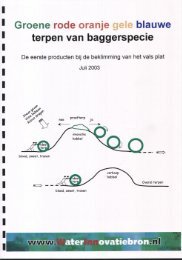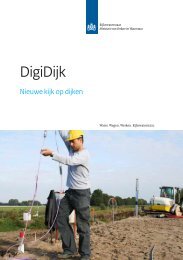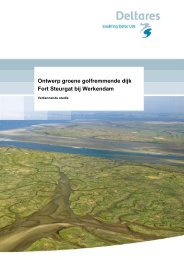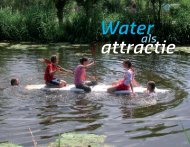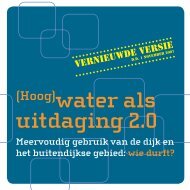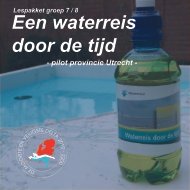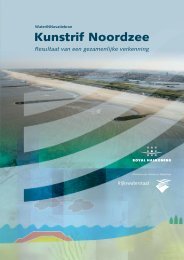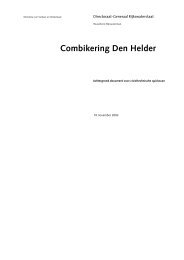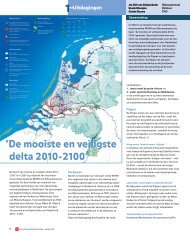Creating opportunities to adapt to climate change through innovative ...
Creating opportunities to adapt to climate change through innovative ...
Creating opportunities to adapt to climate change through innovative ...
You also want an ePaper? Increase the reach of your titles
YUMPU automatically turns print PDFs into web optimized ePapers that Google loves.
which in turn leads <strong>to</strong> more efficient energy use and better awareness of potential threats.More s<strong>to</strong>rage capacity means neighbors can help one another more systematically, splittingthe strain <strong>through</strong>out the system, which also implies that energy usage can be spread out insmall sections, leading <strong>to</strong> savings as well.2.3.2 Shipping informationWhen managing the water level in the Noordzeekanaal, there are many things one needs <strong>to</strong>take in<strong>to</strong> account other than extreme floods or draughts. One of these things is traffic: theNoordzeekanaal does not just function as a way <strong>to</strong> discharge water <strong>to</strong> the sea, it is also animportant part of the regional infrastructure, connecting the Noordzee with the port ofAmsterdam.This means that there are a lot of ships passing the Noordzeekanaal every day, some of themvery large. In order <strong>to</strong> grant them safe passage, we need <strong>to</strong> maintain a minimum water levelthat enables them <strong>to</strong> pass safely over the tunnels in the area. However, this water level ismaintained at all times – even when there are no such large ships passing.Our suggestion was <strong>to</strong> set up a connection with the port of Amsterdam, who operates thelocks in IJmuiden and oversees all ships coming in and going out of the harbor. This way, thepumping station opera<strong>to</strong>rs can go below that minimum level for a short period of time <strong>to</strong>make optimal use of low tides, if they know that there is no ship with a large draftapproaching.We received positive responses <strong>to</strong> this theory, and set out <strong>to</strong> gather information on technicaland ‘political’ feasibility. (Ref. 5.10)2.3.3 RefinementsThis section focuses on using the information you have. The DSS does not currently use allavailable water level information. It measures the local water levels, takes an average, anduses that for its calculations, with no regard for the actual local situations. That means thatit is always working with a greater margin of error than is strictly necessary, because judgingby just the average water level there could be local risks.We wanted <strong>to</strong> find out what would be the advantages (or disadvantages) of taking localwater levels in<strong>to</strong> account, instead of working with an average of the entire Noordzeekanaal.8



